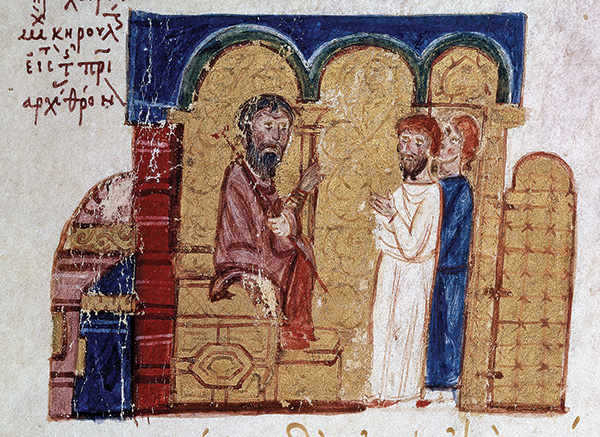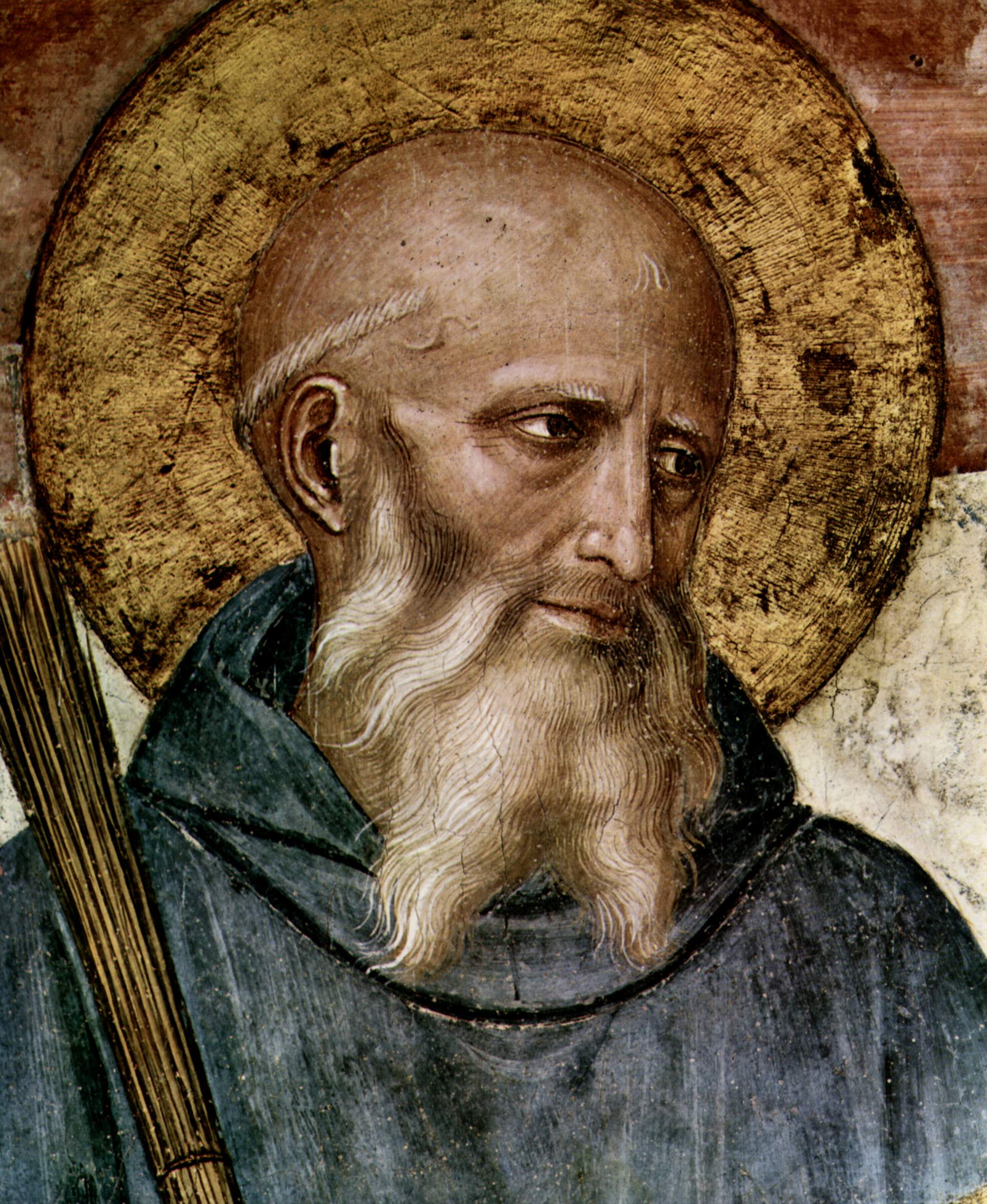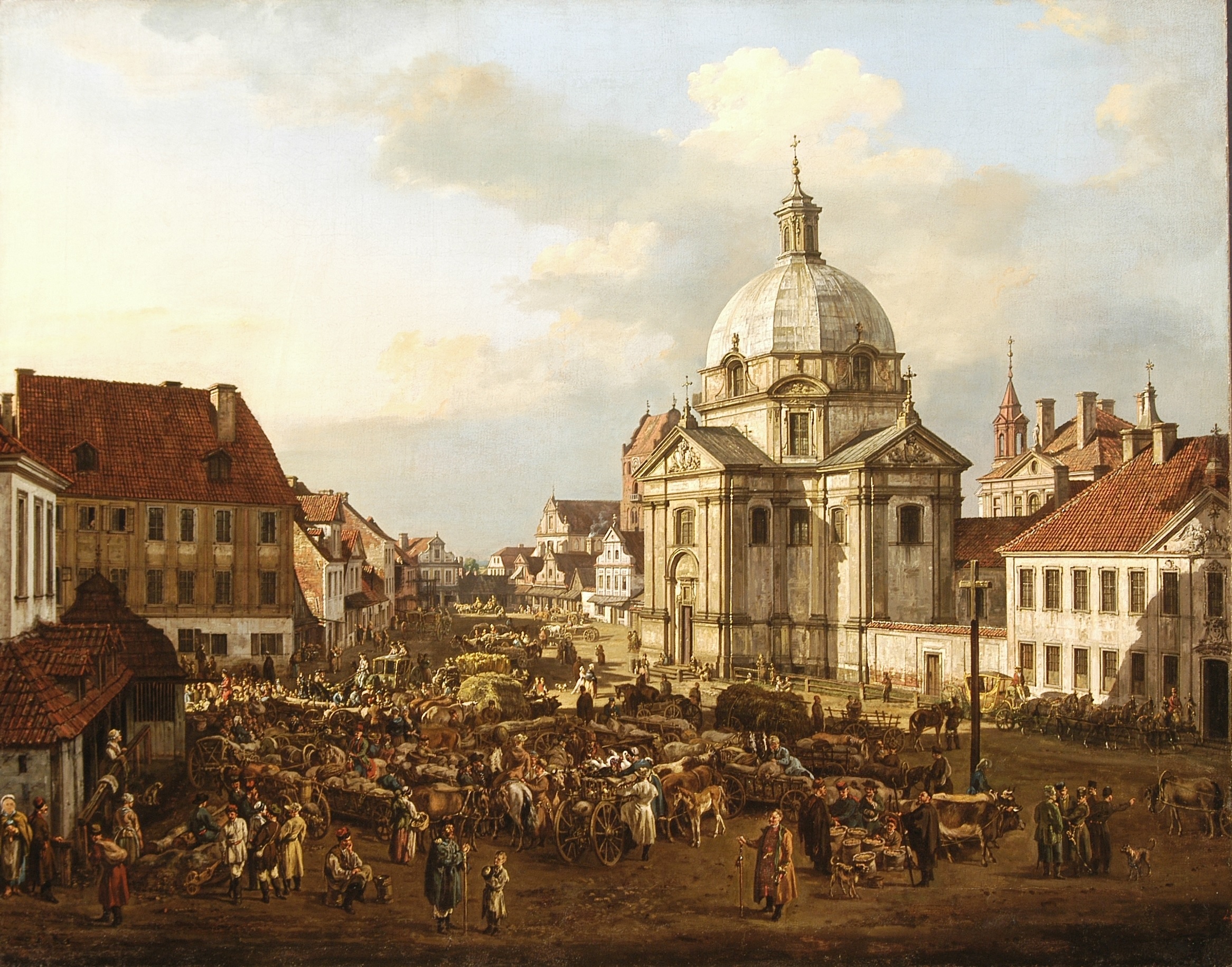|
Montecassino
The Abbey of Monte Cassino (today usually spelled Montecassino) is a Catholic, Benedictine monastery on a rocky hill about southeast of Rome, in the Latin Valley. Located on the site of the ancient Roman town of Casinum, it is the first house of the Benedictine Order, having been established by Benedict of Nursia himself around 529. It was for the community of Monte Cassino that the Rule of Saint Benedict was composed. The first monastery on Monte Cassino was sacked by the invading Lombards around 570 and abandoned. Of the first monastery almost nothing is known. The second monastery was established by Petronax of Brescia around 718, at the suggestion of Pope Gregory II and with the support of the Lombard Duke Romuald II of Benevento. It was directly subject to the pope and many monasteries in Italy were under its authority. In 883, the monastery was sacked by Saracens and abandoned again. The community of monks resided first at Teano and then from 914 at Capua before the ... [...More Info...] [...Related Items...] OR: [Wikipedia] [Google] [Baidu] |
Pope Stephen IX
Pope Stephen IX (, christened Frederick; – 29 March 1058) was the Bishop of Rome and ruler of the Papal States from 3 August 1057 to his death on 29 March 1058. He was a member of the Ardenne-Verdun family, who ruled the Duchy of Lorraine, and started his ecclesiastical career as a canon (priest), canon in Liège. He was invited to Rome by Pope Leo IX, who made him papal chancellor, chancellor in 1051 and one of three papal legate, legates to Constantinople in 1054. The failure of their negotiations with Patriarch Michael I Cerularius of Constantinople and Archbishop Leo of Ohrid led to the permanent East–West Schism. He continued as chancellor to the next pope, Pope Victor II, Victor II, and was elected abbot of the Benedictine monastery of Montecassino. Stephen was papal selection before 1059, elected to succeed Victor on 2 August 1057. As pope, Stephen retained the Montecassino abbacy, enforced the Gregorian Reform, and continued Leo IX's effort ... [...More Info...] [...Related Items...] OR: [Wikipedia] [Google] [Baidu] |
Cassino
Cassino () is a ''comune'' in the province of Frosinone at the southern end of the region of Lazio. It's the last city of the Valle Latina, Latin Valley. It is located at the foot of Monte Cairo near the confluence of the Gari (river), Gari and Liri rivers and on the via Casilina between Rome and Naples. The city is best known as the site of the Monte Cassino, Abbey of Montecassino and the Battle of Monte Cassino during World War II, which resulted in huge Allied and German casualties as well as the near total destruction of the town itself. It is also home to the University of Cassino and Southern Lazio. Cassino has a population of 35,969 as of July 2017, making it the second largest town in the province. History Ancient Cassino's roots lie in the settlement of Casinum, the last city of the Latins (Italic tribe), Latins, of Umbri, UmbrianTacitus, Annales or Venetic or Oscan origin, [...More Info...] [...Related Items...] OR: [Wikipedia] [Google] [Baidu] |
Pope Victor III
Pope Victor III ( 1026 – 16 September 1087), born Dauferio Epifani Del Zotto, was the head of the Catholic Church and ruler of the Papal States from 24 May 1086 to his death. He was the successor of Pope Gregory VII, yet his pontificate is far less notable than his time as Desiderio da Montecassino, the great abbot of Monte Cassino. He is the most recent lawfully elected pope to have taken the pontifical name "Victor".Two antipopes, Gregorio dei Conti in 1138 and Octavianus from 1159 to 1164, both took the style Victor IV but neither has ever been recognised as a lawful pope. His failing health was the factor that made him so reluctant to accept his pontifical election and his health was so poor that he fell to illness during his coronation. The only literary work of his that remains is his ''Dialogues'' on the miracles performed by Benedict of Nursia and other saints at Monte Cassino. Family Daufer was born in 1026. The ''Catholic Encyclopedia'' states his father died ... [...More Info...] [...Related Items...] OR: [Wikipedia] [Google] [Baidu] |
Terra Sancti Benedicti
The ''Terra Sancti Benedicti'' ("Land of Saint Benedict") was the secular territory, or seignory, of the powerful Abbey of Montecassino, the chief monastery of the Mezzogiorno and one of the first Western monasteries: founded by Benedict of Nursia himself, hence the name of its possessions. It lasted from the 8th to the 19th century. The "Terra Sancti Benedicti" was part of larger states, according to the historical succession, from the Duchy of Benevento to the Kingdom of the Two Sicilies. Despite the wide autonomy it enjoyed in some periods, it was never, neither de jure nor de facto, an independent state, as were the Italian city-states of Northern and Central Italy. The nature of the dominion of the Abbey of Montecassino has sometimes been improperly assimilated to these Italian states. The "Terra Sancti Benedicti" is therefore an integral part of the Terra di Lavoro and has always followed its political vicissitudes. History The foundation of the Terra Sancti Benedi ... [...More Info...] [...Related Items...] OR: [Wikipedia] [Google] [Baidu] |
Lombards
The Lombards () or Longobards () were a Germanic peoples, Germanic people who conquered most of the Italian Peninsula between 568 and 774. The medieval Lombard historian Paul the Deacon wrote in the ''History of the Lombards'' (written between 787 and 796) that the Lombards descended from a small tribe called the Winnili,: "From Proto-Germanic language, Proto-Germanic ''wikt:Reconstruction:Proto-Germanic/winnaną, winna-'', meaning "to fight, win" who dwelt in northern Germany before migrating to seek new lands. Earlier Roman-era historians wrote of the Lombards in the first century AD as being one of the Suebian peoples, also from what is now northern Germany, near the Elbe river. They migrated south, and by the end of the fifth century, the Lombards had moved into the area roughly coinciding with modern Austria and Slovakia north of the Danube. Here they subdued the Heruls and later fought frequent wars with the Gepids. The Lombard king Audoin defeated the Gepid leader Thuris ... [...More Info...] [...Related Items...] OR: [Wikipedia] [Google] [Baidu] |
Benedictine
The Benedictines, officially the Order of Saint Benedict (, abbreviated as O.S.B. or OSB), are a mainly contemplative monastic order of the Catholic Church for men and for women who follow the Rule of Saint Benedict. Initiated in 529, they are the oldest of all the religious orders in the Latin Church. The male religious are also sometimes called the Black Monks, especially in English speaking countries, after the colour of their habits, although some, like the Olivetans, wear white. They were founded by Benedict of Nursia, a 6th-century Italian monk who laid the foundations of Benedictine monasticism through the formulation of his Rule. Benedict's sister, Scholastica, possibly his twin, also became a religious from an early age, but chose to live as a hermit. They retained a close relationship until her death. Despite being called an order, the Benedictines do not operate under a single hierarchy. They are instead organized as a collection of autonomous monasteries ... [...More Info...] [...Related Items...] OR: [Wikipedia] [Google] [Baidu] |
Benedictines
The Benedictines, officially the Order of Saint Benedict (, abbreviated as O.S.B. or OSB), are a mainly Christian mysticism, contemplative Christian monasticism, monastic Religious order (Catholic), order of the Catholic Church for men and for women who follow the Rule of Saint Benedict. Initiated in 529, they are the oldest of all the religious orders in the Latin Church. The male religious are also sometimes called the Black Monks, especially in English speaking countries, after the colour of their religious habit, habits, although some, like the Olivetans, wear white. They were founded by Benedict of Nursia, a 6th-century Italian monk who laid the foundations of Benedictine monasticism through the formulation of his Rule. Benedict's sister, Scholastica, possibly his twin, also became a religious from an early age, but chose to live as a hermit. They retained a close relationship until her death. Despite being called an order, the Benedictines do not operate under a single ... [...More Info...] [...Related Items...] OR: [Wikipedia] [Google] [Baidu] |
Valle Latina
Valle Latina (English: "Latin Valley") is an Italian geographical and historical region that extends from the south of Rome to Cassino, corresponding to the eastern area of ancient Roman Latium. The valley's principal cities are Frosinone, Cassino, Sora, Lazio, Sora, Grottaferrata, Anagni, and Alatri. History Ancient According to the tradition, in 496 BC the Romans defeated their Latin rivals in the Battle of Lake Regillus and imposed their dominion over the Old Latium, Latium vetus, corresponding in part to the northern area of the current Latin Valley. In the following centuries, the center and south of the Valley was the heart of Latin colonization in Roman times. Unlike the coastal areas where small Roman colonies were founded, the inland areas saw the creation of diverse and densely populated Latin colonies. The Latins and Romans mixed with the pre-existing Osco-Umbrian languages, Osco-Umbrian-speaking populations, in particular the Hernici, with their capital Anagni, ... [...More Info...] [...Related Items...] OR: [Wikipedia] [Google] [Baidu] |
Benedictine Order
The Benedictines, officially the Order of Saint Benedict (, abbreviated as O.S.B. or OSB), are a mainly Christian mysticism, contemplative Christian monasticism, monastic Religious order (Catholic), order of the Catholic Church for men and for women who follow the Rule of Saint Benedict. Initiated in 529, they are the oldest of all the religious orders in the Latin Church. The male religious are also sometimes called the Black Monks, especially in English speaking countries, after the colour of their religious habit, habits, although some, like the Olivetans, wear white. They were founded by Benedict of Nursia, a 6th-century Italian monk who laid the foundations of Benedictine monasticism through the formulation of his Rule. Benedict's sister, Scholastica, possibly his twin, also became a religious from an early age, but chose to live as a hermit. They retained a close relationship until her death. Despite being called an order, the Benedictines do not operate under a single ... [...More Info...] [...Related Items...] OR: [Wikipedia] [Google] [Baidu] |
Teano
Teano is a town and ''comune'' in the province of Caserta, Campania, southern Italy, northwest of Caserta on the main line to Rome from Naples. It stands at the southeast foot of an extinct volcano, Rocca Monfina. Its St. Clement's cathedral is the see of the Roman Catholic Diocese of Teano-Calvi, which started as the Diocese of Teano circa AD 300. History Ancient times and Middle Ages The ancient ''Teanum Sidicinum'' was the capital of the Oscan tribe of the Sidicini, which drove the Aurunci from Roccamonfina. They probably submitted to Rome in 334 BC and their troops were grouped with those of Campania in the Roman army. Thus the garrison of Regium, which in 280 attacked the citizens, consisted of one cohort of Sidicini and two of Campanians. Like Cales, Teanum continued to have the right of coinage, and, like Suessa and Cales, remained faithful to Rome in both the Hannibalic and the Social wars. Its position gave it some military importance, and it was apparently mad ... [...More Info...] [...Related Items...] OR: [Wikipedia] [Google] [Baidu] |
Peter The Deacon
Peter the Deacon (fl. 1115–1159) was the librarian of the abbey of Montecassino and continuator of the ''Chronicon monasterii Casinensis'', usually called the Monte Cassino Chronicle in English. The chronicle was originally written by Leo of Ostia. According to both Chalandon and Lord Norwich, Peter is a poor historian and writer, much inferior to Leo. Biography Reputedly a descendant of the Counts of Tusculum, he was offered in 1115 to the monastery of Monte Cassino. About 1127 he was forced to leave the abbey and retired to the neighbouring Atina ( Atina, Lazio), because he had supported Abbot Oderisius, who had been deposed by Pope Honorius II. In 1131 he returned to the abbey owing to the death of Pope Honorius. In 1137, he appeared before Emperor Lothair II, then in Italy, on behalf of his monastery. The sovereign was so pleased with him that he appointed him his chaplain and secretary, and would probably have attached him permanently to his person had not Abb ... [...More Info...] [...Related Items...] OR: [Wikipedia] [Google] [Baidu] |







